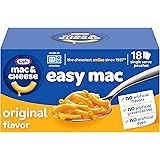In the realm of plant-based cuisine, where innovation meets tradition, a remarkably efficient vegan goulash recipe has garnered significant acclaim. As observed in the accompanying video, the preparation of this savory dish is notably straightforward, relying on staple ingredients and a concise 20-minute simmering period for the potatoes to achieve perfect tenderness. Consequently, this recipe presents an accessible approach to creating a hearty, flavorful, and entirely plant-based meal that resonates with both seasoned vegans and those exploring meat-free alternatives.
Historically, goulash is known as a rich, meat-based stew originating from Hungary, characterized by its vibrant red color from paprika and its comforting, substantial nature. This contemporary vegan interpretation skillfully captures the essence of the classic through a thoughtful selection of plant-based ingredients and a strategic application of spices. Furthermore, the adaptation ensures that the dish remains satisfying and deeply flavorful, without compromising on nutritional value or culinary appeal.
Crafting the Hearty Vegan Goulash: A Deeper Dive into Ingredients and Technique
The success of any culinary creation is often attributed to the quality and interaction of its components. For this particular vegan goulash, the foundation is laid with aromatic vegetables, robust spices, and nutrient-dense legumes. Each ingredient is specifically chosen for its contribution to the overall flavor, texture, and nutritional profile of the stew.
The Aromatic Base: Onion and Garlic
As is frequently the case with many stews and savory dishes, the initial step involves creating an aromatic base. The dicing of one onion and the chopping of two cloves of garlic are not merely procedural; these ingredients are pivotal. When fried in a little oil until translucent, the onion releases its natural sugars, contributing a subtle sweetness, while the garlic provides a pungent depth that is crucial for building complex flavors. This gentle sautéing process, often referred to as ‘sweating’ the vegetables, is foundational to extracting and developing their intrinsic flavors, which then permeate the entire dish.
Vegetable Volume and Texture: Peppers and Potatoes
The addition of two diced peppers—specifically red and yellow for a vibrant color contrast—and two diced potatoes introduces both bulk and varying textures to the goulash. Peppers contribute a fresh, slightly sweet note and a tender-crisp texture, along with a good source of vitamins A and C. Potatoes, on the other hand, serve as a classic stew thickener and a source of satisfying carbohydrates. Frying them briefly after the aromatics helps to slightly caramelize their surfaces, which can enhance their flavor and integrity during the subsequent simmering phase. This brief frying ensures that a desirable depth of flavor is developed early in the cooking process.
The Spice Profile: Smoked Paprika, Cumin, and Marjoram
The characteristic flavor of goulash is heavily reliant on its spice blend, and this vegan version is no exception. A tablespoon of tomato paste is first incorporated, providing an umami-rich base and a subtle tang that complements the spices. Subsequently, a teaspoon of smoked paprika powder is introduced, which is arguably the most critical spice for replicating the traditional goulash taste. Its deep, smoky flavor evokes the richness often associated with meat-based stews. Furthermore, a half teaspoon of cumin adds an earthy, warm undertone, while a teaspoon of marjoram contributes a delicate, aromatic herbal note that brightens the overall profile. The harmonious combination of these spices ensures a complex and authentic flavor experience. Salt and pepper are also added to taste, adjusting the seasoning to achieve perfect balance.
Liquid Foundation and Simmering for Flavor Infusion
To transform the sautéed vegetables and spices into a stew, 400 ml (approximately 1⅔ cups) of vegetable stock is introduced. This liquid is essential for simmering the ingredients, allowing their flavors to meld and deepen over time. The stew is then covered and permitted to simmer for approximately 20 minutes, or until the potatoes become soft. This simmering period is crucial not only for cooking the vegetables thoroughly but also for facilitating the full infusion of all the spice and vegetable flavors into the stock, thereby creating a rich and cohesive broth. Patient simmering is a cornerstone of developing profound flavors in stews.
The Protein Powerhouse: Kidney Beans
The final key ingredient, adding significant nutritional value and heartiness, is one tin of kidney beans. With a drained weight of 240g (approximately 1 cup), these beans provide a substantial source of plant-based protein and dietary fiber. They are added towards the end of the cooking process and cooked for an additional 5 minutes. This timing is strategic; it allows the beans to warm through and absorb some of the stew’s flavors without becoming overly soft or mushy, thus maintaining their pleasant texture. Kidney beans are an excellent choice for this vegan goulash due to their robust texture and ability to soak up the rich, smoky flavors.
Beyond the Recipe: Expanding the Vegan Goulash Experience
While the video provides a clear and concise guide to preparing this delightful plant-based goulash, there are numerous avenues for further enhancement and customization. An understanding of these additional possibilities can elevate the cooking experience and cater to diverse palates.
Nutritional Advantages of a Plant-Based Goulash
This vegan goulash stands out not only for its flavor but also for its impressive nutritional benefits. The reliance on kidney beans provides a substantial amount of protein and fiber, both of which are crucial for satiety and digestive health. The array of vegetables—onions, garlic, peppers, and potatoes—contributes a wide spectrum of vitamins, minerals, and antioxidants. Furthermore, the use of vegetable stock and minimal oil helps to keep the fat content in check, making this a wholesome option for a balanced diet. Plant-based diets, when well-planned, are associated with numerous health benefits, and a hearty vegan goulash can certainly be a part of such a healthful approach.
Variations and Serving Suggestions
The versatility of this vegan goulash allows for various modifications to suit individual preferences. For instance, other vegetables such as carrots, celery, mushrooms, or even a handful of spinach can be incorporated during the simmering stage to boost nutritional content and texture. A touch of heat can be introduced with a pinch of chili flakes or a finely diced jalapeño for those who appreciate a spicier profile. Serving this hearty stew with a dollop of vegan sour cream or a sprinkle of fresh parsley can add an additional layer of creaminess and freshness. It pairs exceptionally well with crusty bread for dipping, or it can be served over rice, noodles, or even a bed of quinoa for a more complete meal. The rich, savory flavors of this plant-based goulash are wonderfully complemented by simple accompaniments.
Meal Preparation and Storage
One of the practical advantages of a stew like this vegan goulash is its suitability for meal preparation. It tends to taste even better the next day as the flavors have more time to meld and develop. The stew can be prepared in a larger batch and portioned into individual containers for convenient lunches or dinners throughout the week. It typically stores well in an airtight container in the refrigerator for up to 3-4 days. For longer storage, it can also be frozen for several months, making it an ideal candidate for batch cooking and ensuring a healthy, delicious meal is always within reach when time is scarce. The robust nature of this plant-based goulash makes it a reliable option for both immediate enjoyment and future planning.










